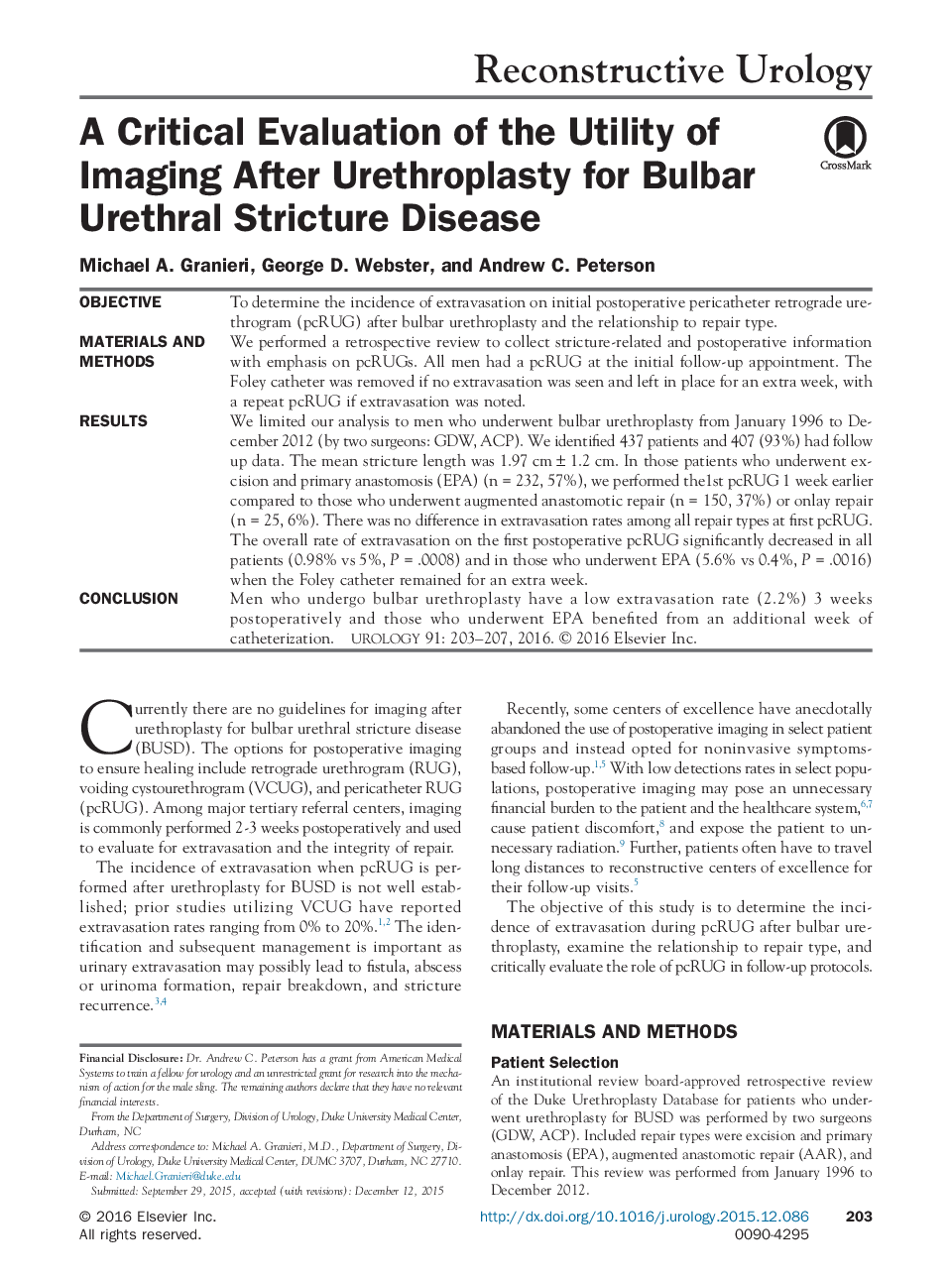| Article ID | Journal | Published Year | Pages | File Type |
|---|---|---|---|---|
| 6165650 | Urology | 2016 | 5 Pages |
ObjectiveTo determine the incidence of extravasation on initial postoperative pericatheter retrograde urethrogram (pcRUG) after bulbar urethroplasty and the relationship to repair type.Materials and MethodsWe performed a retrospective review to collect stricture-related and postoperative information with emphasis on pcRUGs. All men had a pcRUG at the initial follow-up appointment. The Foley catheter was removed if no extravasation was seen and left in place for an extra week, with a repeat pcRUG if extravasation was noted.ResultsWe limited our analysis to men who underwent bulbar urethroplasty from January 1996 to December 2012 (by two surgeons: GDW, ACP). We identified 437 patients and 407 (93%) had follow up data. The mean stricture length was 1.97âcmâ±â1.2âcm. In those patients who underwent excision and primary anastomosis (EPA) (nâ=â232, 57%), we performed the1st pcRUG 1 week earlier compared to those who underwent augmented anastomotic repair (nâ=â150, 37%) or onlay repair (nâ=â25, 6%). There was no difference in extravasation rates among all repair types at first pcRUG. The overall rate of extravasation on the first postoperative pcRUG significantly decreased in all patients (0.98% vs 5%, Pâ=â.0008) and in those who underwent EPA (5.6% vs 0.4%, Pâ=â.0016) when the Foley catheter remained for an extra week.ConclusionMen who undergo bulbar urethroplasty have a low extravasation rate (2.2%) 3 weeks postoperatively and those who underwent EPA benefited from an additional week of catheterization.
